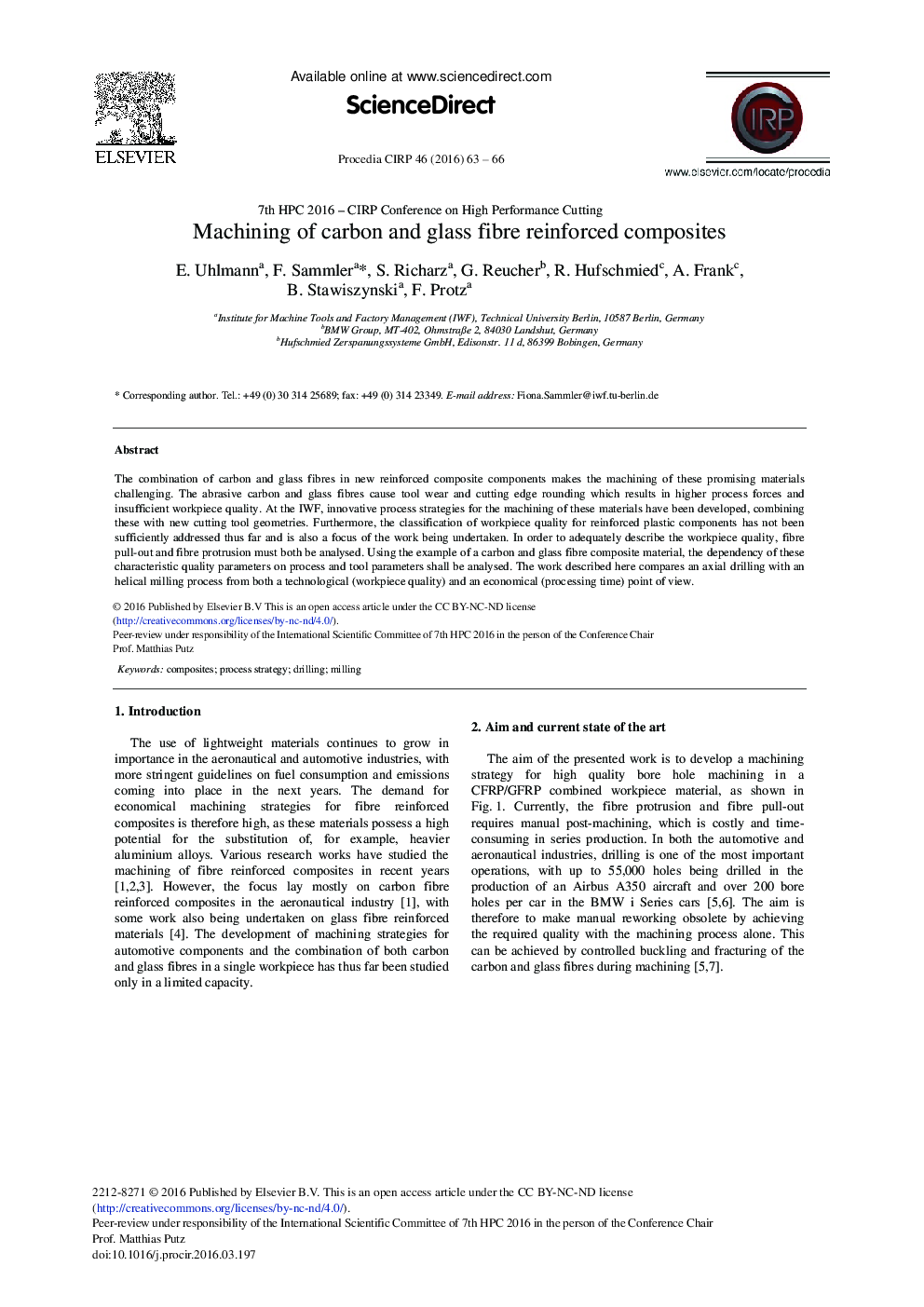| Article ID | Journal | Published Year | Pages | File Type |
|---|---|---|---|---|
| 1698374 | Procedia CIRP | 2016 | 4 Pages |
The combination of carbon and glass fibres in new reinforced composite components makes the machining of these promising materials challenging. The abrasive carbon and glass fibres cause tool wear and cutting edge rounding which results in higher process forces and insufficient workpiece quality. At the IWF, innovative process strategies for the machining of these materials have been developed, combining these with new cutting tool geometries. Furthermore, the classification of workpiece quality for reinforced plastic components has not been sufficiently addressed thus far and is also a focus of the work being undertaken. In order to adequately describe the workpiece quality, fibre pull-out and fibre protrusion must both be analysed. Using the example of a carbon and glass fibre composite material, the dependency of these characteristic quality parameters on process and tool parameters shall be analysed. The work described here compares an axial drilling with an helical milling process from both a technological (workpiece quality) and an economical (processing time) point of view.
